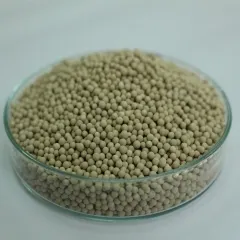- Home
- Products
- Elementary
- Boride Powder
- 3D Printing Powder
- Sulfide Powder
- Oxide Powder
- Carbide powder
- Nitride Powder
- Silicide Powder
- Hydride Powder
- Telluride Powder
- Selenide Powder
- Stearic Acid Series
- Phosphide Powder
- Nanoparticles
- Metal Alloy
- MAX Phase
- Lithium Battery Anode
- Surfactant
- Molecular sieves
- Concrete Admixtures
- Cladding of metals
- News
- Blog
- Contact
- About
Hydrogen Molecular Sieves TRPH5
TRPH5 hydrogenmolecular sieve, a form of calcium silicate aluminate material, is used to generate PSA oxygen, PSA hydrogen, and PSA carbon monoxide.
About Hydrogen Molecular Sieves TRPH5:
Structural characteristics: Hydrogen molecular sieve TRPH5 has a unique three-dimensional pore structure with high order and regularity. This structure allows TRPH5 to adsorb efficiently and separate gas molecules, mainly hydrogen.
Chemical stability: Hydrogen molecular sieve TRPH5 has high chemical stability and can maintain stable performance in harsh environments such as high temperature, high pressure, strong acids, and alkalis. This makes TRPH5 widely used in industrial applications.
High selectivity: Hydrogen molecular sieve TRPH5 is highly selective to hydrogen and can effectively adsorb and separate hydrogen from other gas molecules. This high selectivity makes TRPH5 widely used in hydrogen separation, purification and other fields.
High adsorption capacity: Hydrogen molecular sieve TRPH5 has a high capacity and can adsorb many gas molecules. This high adsorption capacity makes TRPH5 widely used in gas separation, storage and other fields.
Regeneration: Hydrogen molecular sieve TRPH5 can be regenerated by heating, washing, and other recycling methods. This reduces the cost of use and reduces environmental pollution.
Environmental protection: Hydrogen molecular sieve TRPH5 is an environmentally friendly catalyst that will not produce harmful substances, with no environmental pollution.

Applicationes of Hydrogen Molecular Sieves TRPH5:
Hydrogen separation and purification: Hydrogen molecular sieve TRPH5 has a high selectivity for hydrogen and can effectively adsorb and separate hydrogen from other gas molecules. Hydrogen is an important chemical raw material in industrial production, but its purity often fails to meet the use requirements. Using a hydrogen molecular sieve TRPH5 for separation and purification, high-purity hydrogen can be obtained to meet industrial production needs.
Fuel cell: Hydrogen molecular sieve TRPH5 can be used as a catalyst for fuel cells to improve the electrochemical activity of hydrogen, thus improving fuel cells' energy conversion efficiency and life.
Synthetic ammonia: Synthetic ammonia is a vital chemical product, and its production process requires a large amount of hydrogen. Hydrogen molecular sieve TRPH5 can be used as a catalyst for ammonia synthesis to improve the conversion and selectivity of hydrogen.
Environmental protection field: With the continuous improvement of environmental protection awareness, hydrogen molecular sieve TRPH5 has also been widely used in environmental protection. For example, hydrogen molecular sieve TRPH5 can be used for waste gas treatment to remove harmful gases in waste gas and reduce environmental pollution.
Gas storage and transportation: Hydrogen is a flammable and explosive gas, and its storage and transportation require strict safety measures. The hydrogen molecular sieve TRPH5 can be used as a hydrogen adsorbent to absorb a large amount of hydrogen and store it for subsequent transportation and use.
Production Method of Hydrogen Molecular Sieves TRPH5:
Raw material preparation: First, you must prepare sodium silicate, hydroxide, sulfuric acid, and other raw materials. Sodium silicate is the primary raw material for preparing hydrogen molecular sieves, while sodium hydroxide and sulfuric acid are the catalysts in the reaction process. In addition, it is also necessary to prepare a certain amount of template agents, such as organic amines, to control the pore size and specific surface area of the hydrogen molecular sieve.
Dosing and mixing: sodium silicate, sodium hydroxide, sulfuric acid and template agent are mixed in proportion to obtain the mixed liquid. This ratio needs to be determined according to the specific production process.
Crystallization reaction: the mixture is heated to a specific temperature so that sodium silicate reacts with sodium hydroxide and sulfuric acid to produce silicic acid gel. In this process, the templating agent will act as a guiding agent to control the silica gel's pore size and specific surface area.
Aging and aging: The resulting silicone gel is aged to stabilize its structure. The time and temperature of aging treatment also need to be determined according to the specific production process.
Washing and drying: the aged silicone gel is washed to remove impurities and unreacted raw materials. After washing, the silicic acid gel is dried to obtain the primary product of the hydrogen molecular sieve.
Screening and grading: After drying, the primary product of the hydrogen molecular sieve is screened and graded to obtain hydrogen molecular sieve products with different particle sizes. In this process, the size range of screening and grading needs to be determined according to the application needs of the product.
Packaging and storage: The sieved and graded hydrogen molecular sieve products are packaged and stored for subsequent application.
Packing & Shipping of
Hydrogen Molecular Sieves TRPH5:
25kg per carton lined with PE bags;
55 gallon sealed steel drum
Customers can request customized packaging.
Hydrogen Molecular Sieves TRPH5 Properties | |
| Other Titles | N/A |
| N/A | |
| Compound Formula | N/A |
| Molecular Weight | N/A |
| Appearance | NA |
| Melting Point | N/A |
| Boiling Point | N/A |
| Density | N/A |
| Solubility of H2O | N/A |
| Exact Matrix | N/A |
Hydrogen Molecular Sieves TRPH5 Health & Safety Information | |
| Signal word | N/A |
| Hazard Statements | N/A |
| Hazard Codes | N/A |
| Risk Codes | N/A |
| Safety statements | N/A |
| Transport Information | N/A |
Inquiry us
PREVIOUS Molecular sieves
Molecular Sieves 4A
NEXT Molecular sieves